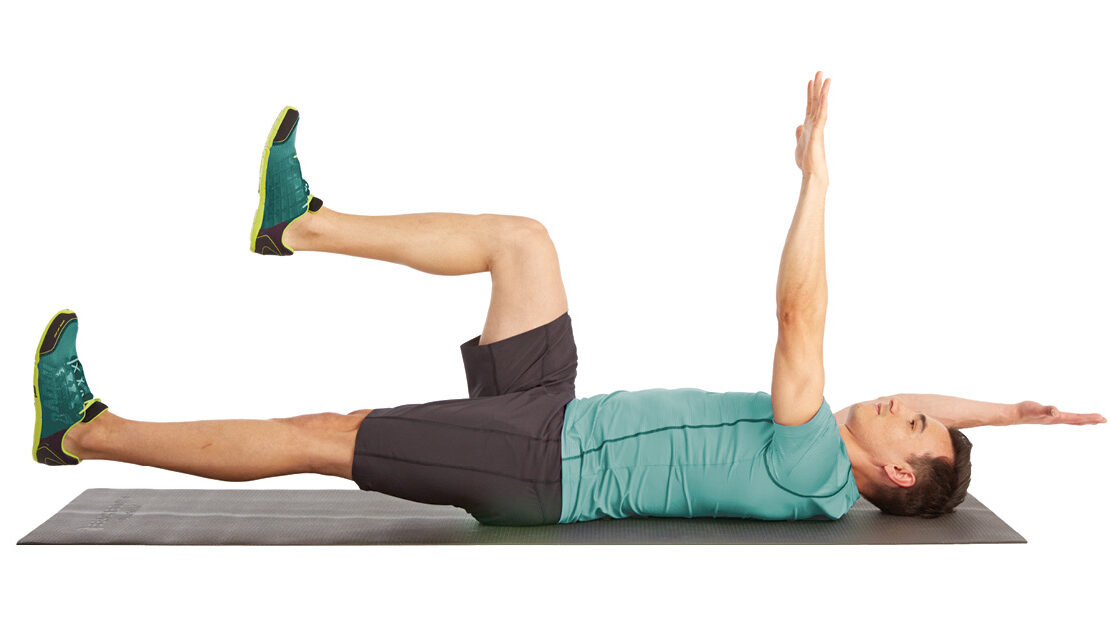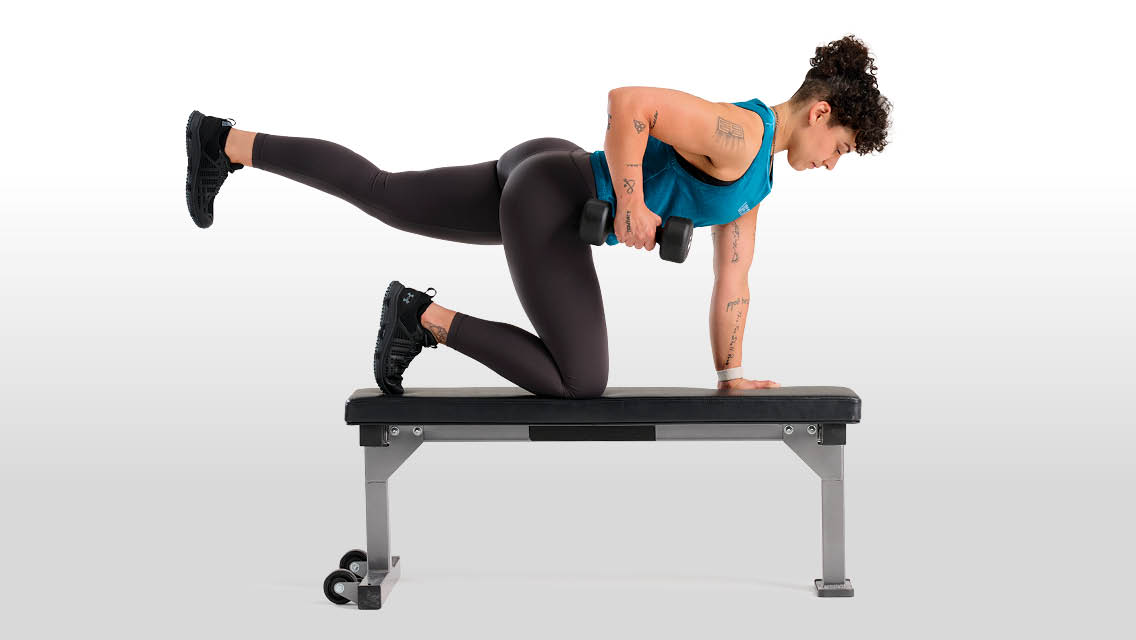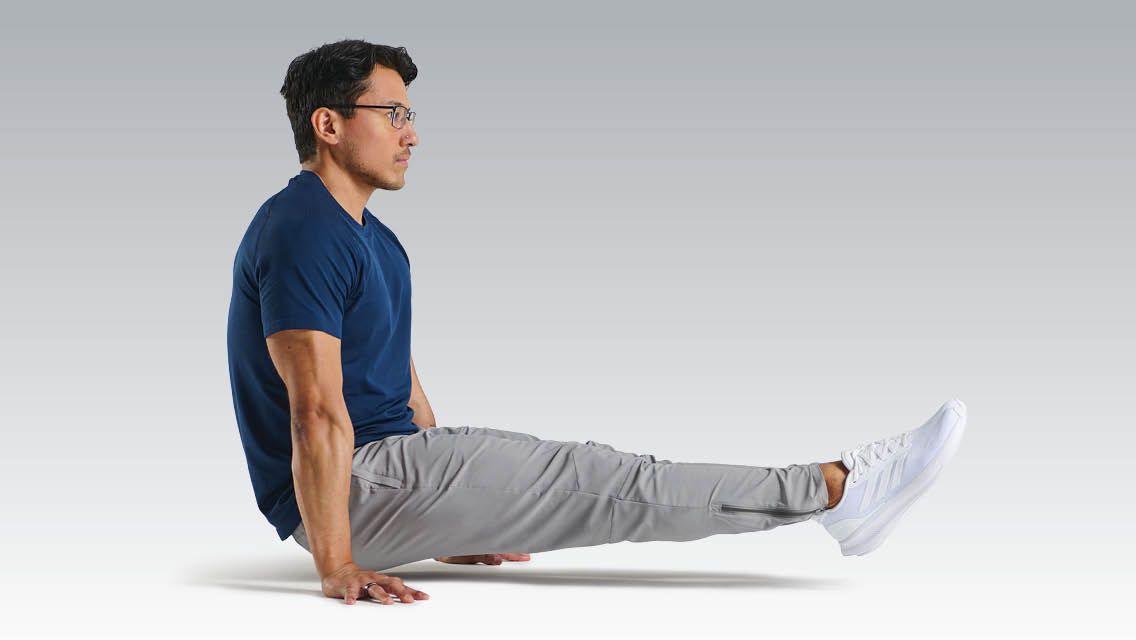The dead bug is a contralateral exercise that challenges the core to remain stable while the arms and legs move in opposition: The left leg extends with the right arm, and vice versa.
The move is fantastic for developing core stability and cross-body coordination. It trains pelvic stability and oblique engagement while the limbs are in motion, a posture that supports athletic performance and day-to-day function.
Additionally, unlike some other ab exercises, dead bugs eliminate joint stress that can cause discomfort in the neck, shoulders, and lower back. The move can also be adapted to different fitness and skill levels.
The trouble with dead bugs, however, is exactly what makes them so powerful: The contralateral movement of the arms and legs develops cross-body coordination — but it can be hard to get the hang of that rhythm. The stability it develops in the core requires the ability to control the midsection and a willingness to cut the reps short if form breaks.
If pelvic stability is an issue, place a softly rolled-up hand towel under your lower back and actively maintain pressure against the towel as you move your arms and legs. If the arm–leg coordination is difficult at first, hold your arms straight over your chest.
Remember: There is no ego in dead bugs — no PRs to pursue. Be open to slowing down, staying focused, and maintaining control to reap all the benefits of this move.
1) Lie on your back and lift your arms and legs into the air. Your arms will be straight over your chest, knees bent at about 90 degrees. (You can also start with legs straight in the air.)
Tip: Keep your head on the floor, your neck in a neutral position.
2) Engage your core, drawing your ribs down and pressing your lower back into the floor. Extend one leg to straighten it while dropping the opposite-side arm overhead. Reverse and repeat on the opposite side.
Tip: Actively flex your feet throughout the movement. Do not lower your heels all the way to the floor. Extend and lower your legs only as far as possible without arching your lower back.
3) Alternate sides, drawing your knee in only to hip level — not all the way to your chest. Perform three to five sets of 20 total reps (10 per side).
Tip: Do not let your pelvis pitch forward or back as you move.
4 Dead Bug Variations
Dead-Bug Isometric Hold
- Assume the starting position for a dead bug: Lying on your back, lift your arms and legs into the air. Your arms will be straight over your chest. Legs can be straight in the air or knees can be bent at about 90 degrees.
- Create tension in your abdomen and limbs, as though you were pressing into an imaginary box between your arms and legs.
- Hold for several breaths, up to 30 seconds, or till you can no longer maintain tension.
- Repeat.
Dead-Bug Leg-Lowers
- Assume the starting position for a dead bug: Lying on your back, lift your arms and legs into the air. Your arms will be straight over your chest. Legs can be straight in the air or knees can be bent at about 90 degrees.
- Perform the lower-body portion of the movement, keeping your arms still and engaged over your chest.
- Keeping your left leg still, slowly lower your right leg until your heel touches the floor or is as low as you can control it without arching your back.
- Reverse the movement, then repeat with your left leg.
- Continue alternating legs for 20 total reps (10 per side).
Banded Dead Bug
- Attach a resistance band to a sturdy anchor, such as a squat rack or pole, at about knee height.
- Lie down on the floor and grasp the band.
- Set up for dead bug by lying on your back with arms and legs in the air.
- Make sure you are far enough from the anchor point that there is tension in the band when your arms are extended straight.
- With legs straight or knees bent to about 90 degrees, perform the lower-body portion of the movement. Actively press your hands into the band to engage your arms and abdominal muscles while you extend one leg at a time.
- Continue alternating legs for 20 total reps (10 per side).
Dead Bug With Stability Ball
- Assume the starting position for a dead bug — lying on your back with arms and legs in the air — and position a stability ball in between your arms and legs.
- Actively press into the ball with all your limbs to feel your abs engage and your back press into the floor.
- Extend one leg and the opposite-side arm to the floor.
- At the same time, keep pressing the stationary arm and leg into the ball. Bring your limbs back to center, reset by pressing all your arms and legs into the ball, and then repeat on the opposite side.
- Alternate sides for 20 total reps (10 per side).




This Post Has 0 Comments